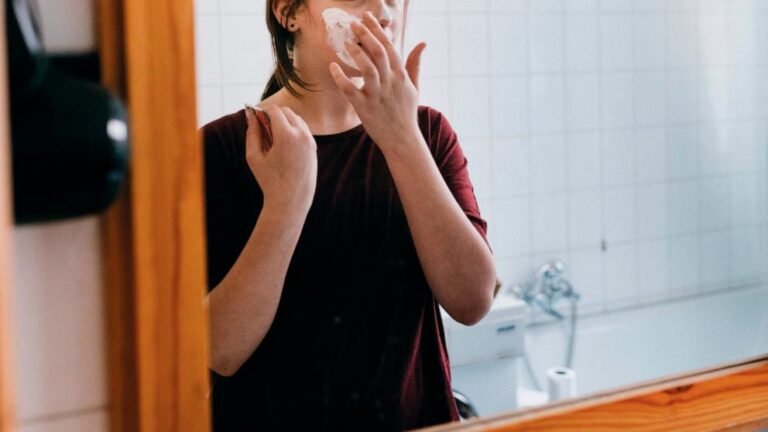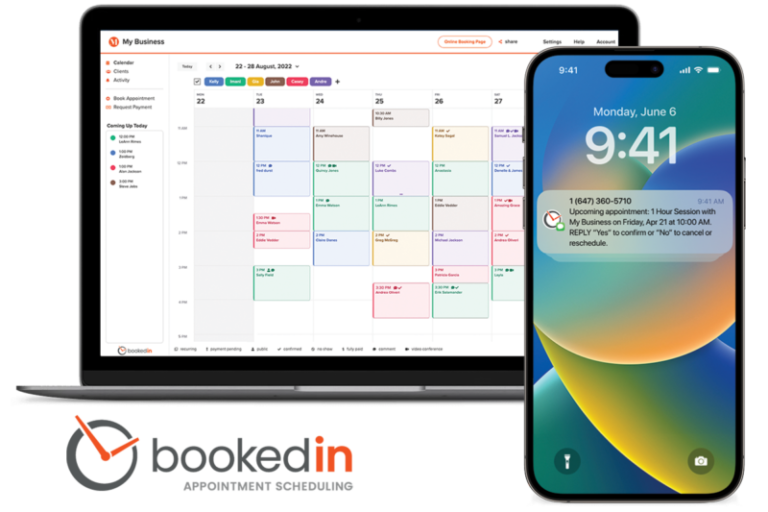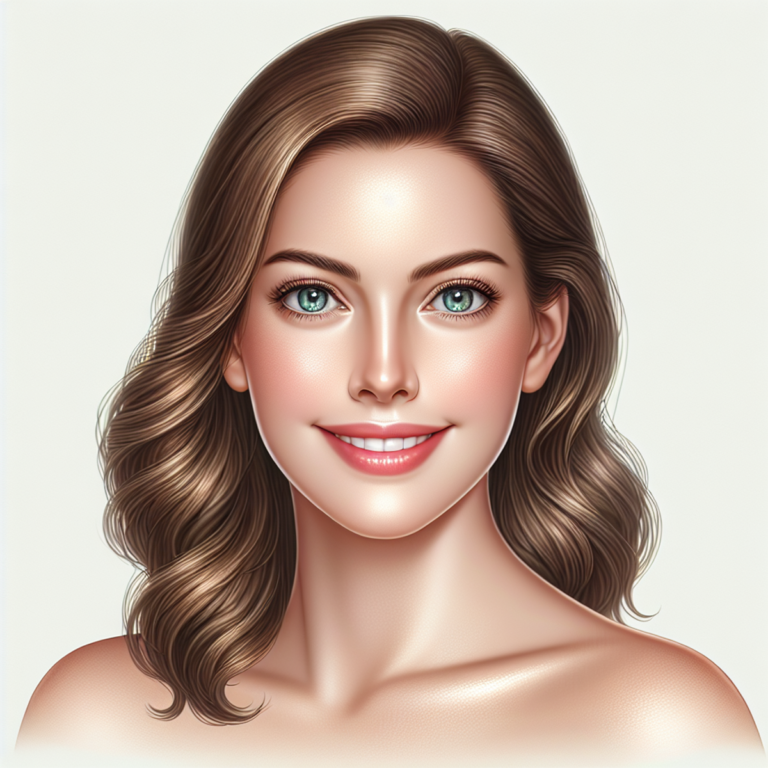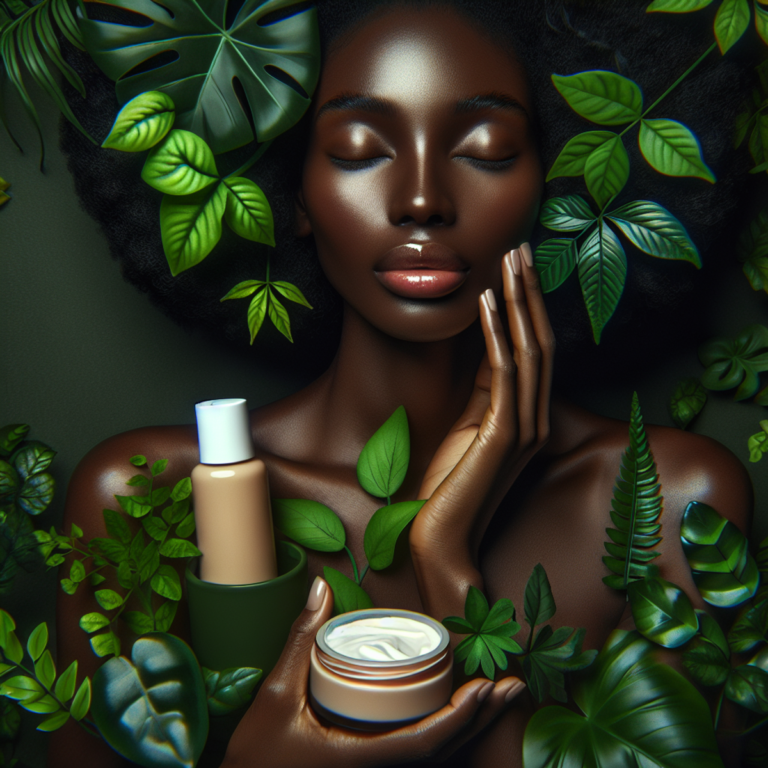How to Manage Pimples and Still Be Beautiful

Introduction
Dealing with pimples can feel like an endless battle against your own skin. You look in the mirror, spot a new breakout, and your confidence takes an immediate hit. Those pesky bumps on your forehead, the stubborn spots that seem to appear overnight, and the frustrating cystic pimples that refuse to budge – they all impact how you feel about yourself.
But here’s the truth: Your beauty isn’t defined by your acne.
In this comprehensive guide, you’ll discover practical strategies to:
- Build an effective skincare routine that works with your skin, not against it
- Master the art of concealing spots while letting your skin breathe
- Shrink cystic pimples using proven techniques
- Get rid of those tiny bumps on your face through targeted treatments
- Transform your mindset about beauty and self-worth
You’ll learn to balance active acne care with beauty enhancement techniques that won’t compromise your skin’s health. This isn’t about achieving “perfect” skin – it’s about feeling confident and beautiful while managing your acne journey.
Whether you’re dealing with occasional breakouts or persistent acne, this guide provides actionable steps to help you navigate skincare challenges while embracing your natural beauty. Let’s transform your relationship with your skin, one step at a time.
Understanding Pimples
Pimples come in various forms, each requiring specific treatment approaches. Let’s explore the main types you might encounter:
1. Whiteheads and Blackheads
- Whiteheads appear as small, white bumps caused by clogged pores with trapped oil and dead skin cells
- Blackheads form when these clogged pores remain open, causing the contents to oxidize and turn dark
2. Inflammatory Acne
- Papules: Small, red, tender bumps without a visible center
- Pustules: Red bumps with white or yellowish centers filled with pus
- Nodules: Large, painful bumps deep under the skin
- Cystic acne: Deep, painful cysts filled with pus and fluid
Your body creates these unwanted guests through several key triggers:
Primary Causes
- Excess oil production
- Dead skin cell buildup
- Bacteria proliferation
- Inflammation
- Hormonal changes
Contributing Factors
- Stress levels triggering cortisol production
- Diet choices high in dairy or sugar
- Genetic predisposition
- Certain medications
- Environmental factors
You can identify the root cause of your breakouts through these patterns:
Location-Based Identification
- Forehead and T-zone: Often linked to hair products or digestive issues
- Chin and jawline: Typically hormonal
- Cheeks: Can indicate environmental factors or phone bacteria
- Back and chest: May suggest sweat-trapped bacteria or reaction to laundry products
Timing-Based Patterns
- Monthly breakouts: Hormonal fluctuations
- Post-workout pimples: Sweat-related bacteria
- Seasonal changes: Environmental adaptations
- Stress-related flare-ups: Cortisol spikes
Understanding your specific type of acne and its triggers forms the foundation for effective treatment. This knowledge helps you select appropriate skincare products and lifestyle modifications to address your unique skin concerns.
Building an Effective Skin Care Routine for Acne-Prone Skin
Creating a consistent skincare routine is essential for managing acne-prone skin. Your daily regimen should focus on gentle yet effective products that address your specific skin concerns without causing irritation.
Essential Components of Your Routine:
Morning Routine
- Gentle cleansing
- Targeted treatment application
- Non-comedogenic moisturizer
- Broad-spectrum sunscreen
Evening Routine
- Double cleansing (if wearing makeup)
- Active ingredients application
- Hydrating products
- Spot treatments
Key Product Ingredients to Look For:
- Salicylic acid (BHA) for unclogging pores
- Niacinamide for oil control
- Hyaluronic acid for hydration
- Benzoyl peroxide for bacteria control
- Alpha-hydroxy acids (AHAs) for gentle exfoliation
Products to Avoid:
- Heavy, oil-based formulations
- Alcohol-heavy toners
- Physical scrubs with harsh particles
- Fragranced skincare items
- Comedogenic ingredients
Your skin type determines the texture and concentration of products you should use. Oily skin benefits from gel-based formulations, while combination skin might need different products for different areas of the face.
Signs Your Routine is Working:
- Reduced frequency of breakouts
- Less inflammation
- Balanced oil production
- Smoother skin texture
- Fading of post-acne marks
Timing Your Products:
- Wait 60 seconds between cleansing and applying treatments
- Allow 3-5 minutes between each product application
- Apply products from thinnest to thickest consistency
- Use active ingredients at appropriate times (some work better at night)
Building Product Tolerance:
Start with basic products and introduce new items gradually:
- Week 1-2: Cleanser and moisturizer only
- Week 3-4: Add one active ingredient
- Week 5-6: Incorporate additional treatments
- Week 7-8: Complete routine implementation
Patch Testing Protocol:
Step 2: Hydrating Your Skin Effectively
A common misconception about acne-prone skin is that skipping moisturizer helps reduce oiliness and breakouts. This belief couldn’t be further from the truth. Your skin needs proper hydration to maintain its protective barrier and regulate oil production.
When your skin becomes dehydrated, it triggers increased sebum production to compensate for the lack of moisture. This excess oil can lead to clogged pores and new breakouts. The key lies in choosing the right type of moisturizer for your specific skin needs.
Selecting the Perfect Moisturizer:
- Look for products labeled “non-comedogenic” or “oil-free”
- Choose gel-based formulas for extremely oily skin
- Select lightweight lotions for combination skin
- Opt for products containing hyaluronic acid for hydration without heaviness
Beneficial Ingredients to Look For:
- Niacinamide – helps control oil production
- Ceramides – strengthen skin barrier
- Glycerin – provides lightweight hydration
- Aloe vera – soothes inflammation
- Panthenol – promotes healing
Application Tips:
- Apply moisturizer while skin is slightly damp
- Use gentle patting motions instead of rubbing
- Focus on areas prone to dryness first
- Allow product to fully absorb before applying other products
For daytime use, prioritize moisturizers with SPF protection to prevent post-inflammatory hyperpigmentation from existing acne. During nighttime, you can opt for slightly richer formulas that support your skin’s natural repair process without causing congestion.
Remember to adjust your moisturizer based on seasonal changes and your skin’s current needs. Hot weather might require lighter formulations, while cold months may call for additional hydration support.
Targeted Treatments: Spot Treating Pimples with Over-the-Counter Products
Spot treatments offer quick relief for active breakouts. These targeted solutions deliver concentrated ingredients directly to problem areas, helping reduce inflammation and speed up healing.
1. Benzoyl Peroxide (2.5% – 10%)
Best for inflammatory acne and cystic pimples
- Caution: Can bleach fabrics and cause dryness
Benzoyl peroxide is a powerful ingredient that kills acne-causing bacteria, reduces inflammation and redness. It is most effective for treating inflammatory acne and cystic pimples.
2. Salicylic Acid (0.5% – 2%)
Ideal for blackheads and whiteheads
- Tip: Start with lower concentrations to minimize irritation
Salicylic acid works by unclogging pores through the dissolution of dead skin cells and reducing excess oil production. This makes it particularly beneficial for blackheads and whiteheads.
3. Tea Tree Oil
Works well for mild to moderate acne
- Note: Always dilute with carrier oil before application
Tea tree oil is a natural alternative with antibacterial properties that can be less irritating than chemical alternatives. It is effective in treating mild to moderate acne.
4. Sulfur-Based Products
Perfect for sensitive skin types
Best Practice: Apply as thin layer only on affected areas
Sulfur-based products draw out impurities and reduce excess oil, making them suitable for sensitive skin types.
5. Application Tips:
- Clean skin thoroughly before treatment
- Use clean fingers or cotton swabs
- Apply a thin layer to avoid irritation
- Don’t mix multiple active ingredients
- Apply at night for maximum effectiveness
Remember: Spot treatments work best when applied at the first sign of a breakout. Different ingredients target different types of acne, so you might need to experiment to find what works for your skin type.
Makeup Tips That Won’t Worsen Your Acne
Selecting the right makeup products plays a crucial role in managing acne-prone skin. Your makeup routine can either support your skin’s healing process or trigger new breakouts.
Choosing Acne-Safe Products
- Look for “non-comedogenic” labels on all products
- Opt for mineral-based foundations and powders
- Select silicone-free primers to prevent pore congestion
- Use clean brushes and beauty sponges for application, and consider this guide on makeup brush essentials for more insights.
Essential Product Features
- Oil-free formulations
- Water-based foundations
- Fragrance-free options
- Bismuth oxychloride-free minerals
Mastering Color Correction
Active breakouts require strategic color correction before concealer application. Green color correctors neutralize redness effectively:
- Dab a tiny amount of green color corrector on inflamed areas
- Pat gently with fingertips – avoid rubbing
- Wait 30 seconds for the product to set
- Apply foundation or concealer on top
Professional Concealing Techniques
The Layering Method
- Apply a thin layer of concealer
- Let it dry for 20 seconds
- Add another light layer if needed
- Set with translucent powder
Spot Concealing Tips
- Use a small, pointed brush for precise application
- Pick a concealer shade matching your skin tone exactly
- Pat product into skin rather than wiping
- Build coverage gradually in thin layers
Tools and Application Methods
Best Tools for Acne-Prone Skin
- Disposable makeup sponges
- Synthetic fiber brushes
- Clean beauty blenders
- Silicon applicators
Proper Tool Care
- Clean brushes weekly with gentle soap
- Replace beauty sponges monthly
- Avoid sharing makeup tools
- Store tools in clean, dry areas
Foundation Application Strategies
The right application technique prevents irritation and maintains coverage:
- Start with clean, moisturized skin
- Apply primer only where needed
- Use stippling motions to press product into skin
- Focus coverage on problem areas
- Build foundation gradually using this fusion technique for optimal results.
- Set makeup with a light dusting of powder
The Connection Between Mindset and Acne Management Success
Your mindset plays a crucial role in managing acne effectively. Research shows that stress triggers the production of cortisol, a hormone that increases sebum production and inflammation – leading to more breakouts.
Here’s how negative self-talk affects your skin:
- Increased Stress Hormones: Constant worry about your appearance releases cortisol, making your skin more prone to breakouts
- Disrupted Sleep Patterns: Anxiety about your skin can affect sleep quality, impacting your skin’s natural healing process
- Poor Skincare Choices: Feeling frustrated might lead to aggressive treatments or picking at your skin, causing more damage
Breaking this cycle requires a shift in perspective:
- Practice Self-Compassion: Treat yourself with the same kindness you’d offer a friend dealing with skin concerns
- Document Your Progress: Take photos of your skin journey to notice improvements rather than focusing on temporary setbacks
- Set Realistic Expectations: Understand that healing takes time – most treatments need 6-8 weeks to show results
Creating positive affirmations specific to your skincare journey helps rewire negative thought patterns. Replace thoughts like “My skin is terrible” with “My skin is healing, and I’m taking steps to support it.”
Consider starting a skincare meditation practice: apply your products mindfully, focusing on gentle touches and positive intentions for your skin’s health. This mindful approach reduces stress-related breakouts and enhances your treatment’s effectiveness.
Nourishing Your Skin from Within: The Role of Diet in Acne Control
Your diet plays a crucial role in managing pimples and maintaining clear, beautiful skin. Research shows direct connections between specific foods and acne flare-ups.
Foods That Can Trigger Acne:
- High-glycemic foods – White bread, sugary snacks, and processed foods spike insulin levels
- Dairy products – Especially skim milk contains hormones that stimulate oil production
- Processed meats – These contain inflammatory compounds that can worsen existing breakouts
Skin-Supporting Foods to Include:
- Omega-3 rich foods – Salmon, chia seeds, and walnuts reduce inflammation
- Zinc-rich options – Pumpkin seeds, lentils, and oysters support skin healing
- Antioxidant-packed produce – Berries, leafy greens, and sweet potatoes fight free radicals
Practical Diet Changes for Clearer Skin:
- Replace refined carbs with whole grain alternatives
- Add a serving of fatty fish to your weekly meal plan
- Include colorful vegetables in every meal
- Stay hydrated with 8-10 glasses of water daily
The gut-skin connection plays a significant role in acne development. Probiotic-rich foods like kimchi, yogurt, and kombucha support healthy gut bacteria, which can reduce skin inflammation.
Blood sugar stability impacts your skin’s appearance. Eating balanced meals with protein, healthy fats, and fiber helps maintain steady insulin levels throughout the day. This balance reduces the likelihood of hormonal fluctuations that trigger breakouts.
A food diary can help identify specific triggers affecting your skin. Track what you eat and note any changes in your complexion over 2-3 weeks. This personal data provides valuable insights into your unique dietary needs for maintaining clear skin.
Quick Fixes When You Need Pimple Relief Fast!
When a pimple appears at the worst possible moment, these proven emergency remedies can help minimize its appearance quickly:
1. Ice Application
- Wrap an ice cube in a clean cloth
- Apply for 1-2 minutes
- Take a 5-minute break
- Repeat 3-4 times
Reduces inflammation and redness within hours.
2. Tea Tree Oil Solution
- Mix 1 drop tea tree oil with 4 drops carrier oil
- Apply directly to the pimple with a cotton swab
- Leave on for 4-8 hours or overnight
Contains natural antibacterial properties.
3. Hydrocolloid Patches
- Place directly on the cleaned pimple
- Wear for 6-8 hours
Draws out fluid and reduces swelling.
4. DIY Spot Treatment
- Mix equal parts honey and turmeric
- Apply as spot treatment for 15 minutes
- Rinse with lukewarm water
Provides anti-inflammatory benefits.
5. Green Tea Compress
- Steep green tea bag in hot water
- Let it cool completely
- Press gently against the affected area
- Hold for 5 minutes
Contains antioxidants that reduce redness.
These remedies work best when applied at the first sign of a breakout. For optimal results, keep the affected area clean and avoid touching it with unwashed hands.
Long-Term Strategies for Maintaining Clearer Skin Over Time
Creating lasting skin improvements requires dedication to healthy lifestyle practices that complement your skincare routine. These daily habits work together to strengthen your skin’s natural defense mechanisms and reduce inflammation.
Essential Daily Practices:
- Get 7-9 hours of quality sleep to allow skin cell regeneration
- Exercise for 30 minutes to boost blood circulation and oxygen flow
- Stay hydrated with 8 glasses of water daily
- Practice stress management through meditation or yoga
- Change pillowcases twice weekly to prevent bacteria buildup
Preventive Skincare Habits:
- Keep hair clean and away from face
- Avoid touching face throughout the day
- Clean phone screens and makeup brushes regularly
- Wear broad-spectrum sunscreen daily
- Remove makeup before workouts
Healthy Routines:
- Schedule regular facials every 4-6 weeks
- Maintain consistent wake/sleep cycles
- Take breaks from heavy makeup
- Track your skin’s response to different activities
- Keep a skin journal to identify triggers
These lifestyle adjustments create a strong foundation for skin health. The key lies in consistency – small, daily actions build up to significant improvements. Your skin responds to how you treat your body, making these habits essential components of any successful long-term acne management strategy.
Embracing Beauty Beyond Pimples: A Holistic Approach to Skincare Confidence!
Your skin tells a unique story, and every mark represents a chapter in your personal journey. True beauty radiates from self-acceptance and the conscious steps you take toward skin health.
Shift Your Perspective
- See your skin as a living, healing organ rather than a canvas that needs perfection
- Celebrate small improvements in your skin’s health
- Focus on progress rather than perceived flaws
Build Confidence Through Action
- Document your skincare journey with photos
- Practice positive self-talk when looking in the mirror
- Surround yourself with supportive people who emphasize inner beauty
Create Beauty Rituals
- Transform your skincare routine into a self-care ritual
- Use gentle facial massage techniques during product application
- Practice mindful breathing during your morning and evening routines
Express Your Beauty
- Experiment with makeup techniques that make you feel confident
- Wear clothes and accessories that boost your mood
- Share your journey to inspire others dealing with similar challenges
Your beauty isn’t defined by the presence or absence of pimples. Each day presents an opportunity to nurture your skin while embracing your natural features. Remember: clear skin is a journey, not a destination. You’re beautiful right now, at this moment, exactly as you are.
“Beauty begins the moment you decide to be yourself” – Coco Chanel
Take pride in your skincare commitment, celebrate your progress, and let your confidence shine through – pimples or no pimples.
Embracing Beauty Beyond Pimples: A Holistic Approach to Skincare Confidence!
Your beauty shines through regardless of skin imperfections. A holistic approach to skincare combines physical care with mental well-being, creating a balanced path to confidence.
Key Elements of Holistic Skincare:
- Practice self-compassion through positive daily affirmations
- Celebrate your unique features beyond skin appearance
- Create a sustainable skincare routine that brings you joy
- Build a support network of friends who uplift you
- Focus on activities that boost your confidence
Your skin doesn’t define your worth. Research shows that people remember your energy and personality far more than temporary skin concerns. Many successful individuals, including celebrities like Kendall Jenner and Justin Bieber, have openly shared their acne struggles while maintaining successful careers.
Simple Daily Confidence Boosters:
- Wear clothes that make you feel powerful
- Style your hair in ways you love
- Engage in physical activities that energize you
- Practice mindful breathing when feeling self-conscious
- Document your skincare progress with photos
Remember: Beautiful skin is healthy skin – not necessarily perfect skin. Each step you take toward caring for yourself holistically strengthens both your skin’s health and your self-confidence.
FAQs (Frequently Asked Questions)
What are the different types of pimples?
There are several types of pimples, including cystic acne, pustules, and blackheads. Each type forms differently and may require specific treatments.
How can I manage acne while maintaining my beauty routine?
Balancing acne care with beauty involves adopting a consistent skincare routine, using non-comedogenic products, and being mindful of makeup choices that won’t worsen breakouts.
What steps should I take to properly cleanse my skin?
To cleanse your skin effectively, choose a gentle cleanser suitable for your skin type, wash your face twice daily without scrubbing too hard, and avoid products that may irritate existing pimples.
How can I hydrate my skin if I have acne-prone skin?
Hydrating acne-prone skin is essential. Use lightweight, non-comedogenic moisturizers to keep your skin hydrated without clogging pores or triggering breakouts.
What are some effective spot treatments for pimples?
Popular over-the-counter spot treatments include benzoyl peroxide and salicylic acid. These ingredients help reduce inflammation and clear up active breakouts but may have side effects like dryness.
How does my mindset affect my acne management?
Mental health plays a significant role in skincare. Stress and low self-esteem can exacerbate acne issues. Maintaining a positive mindset can improve both mental well-being and the effectiveness of your skincare routine.










